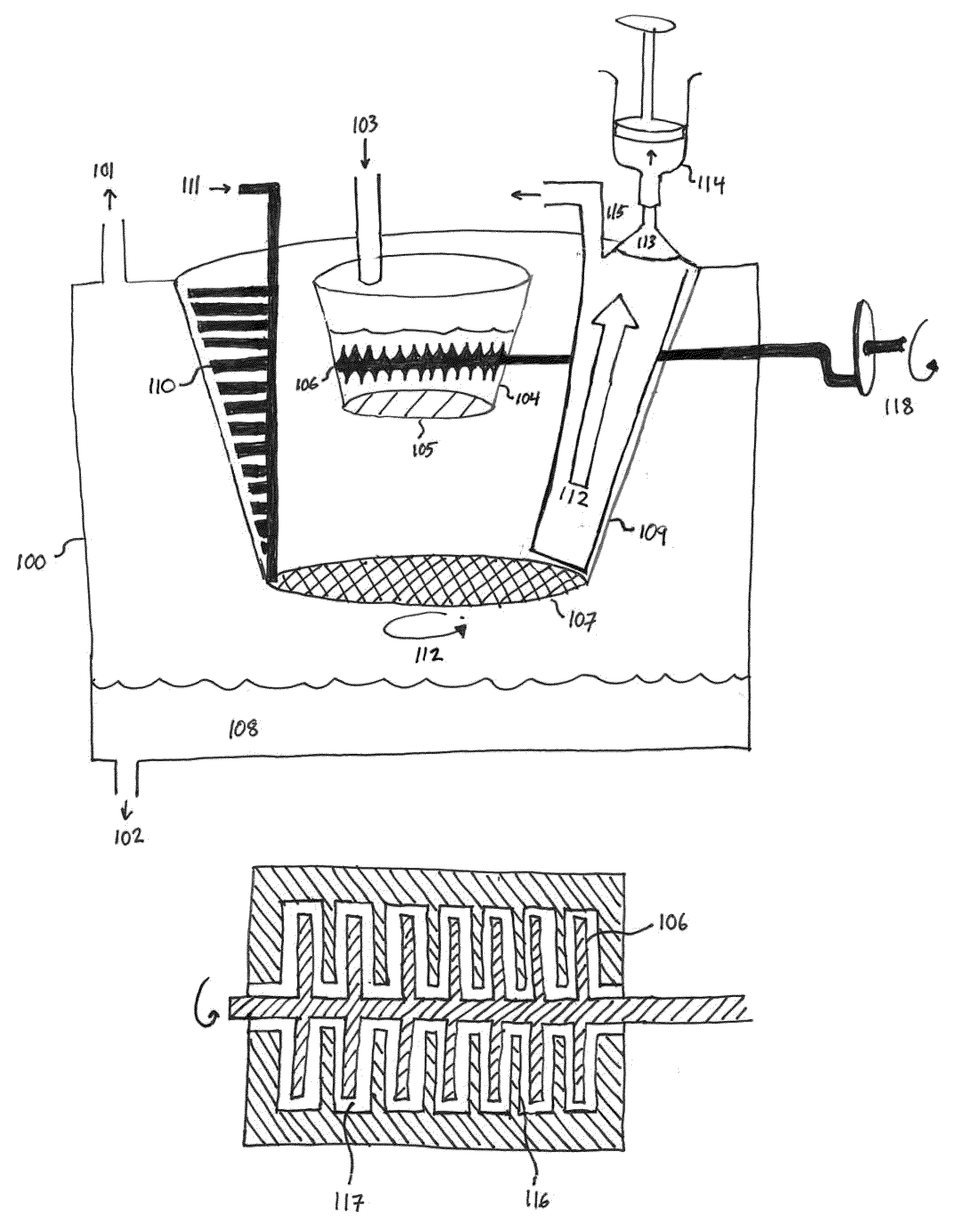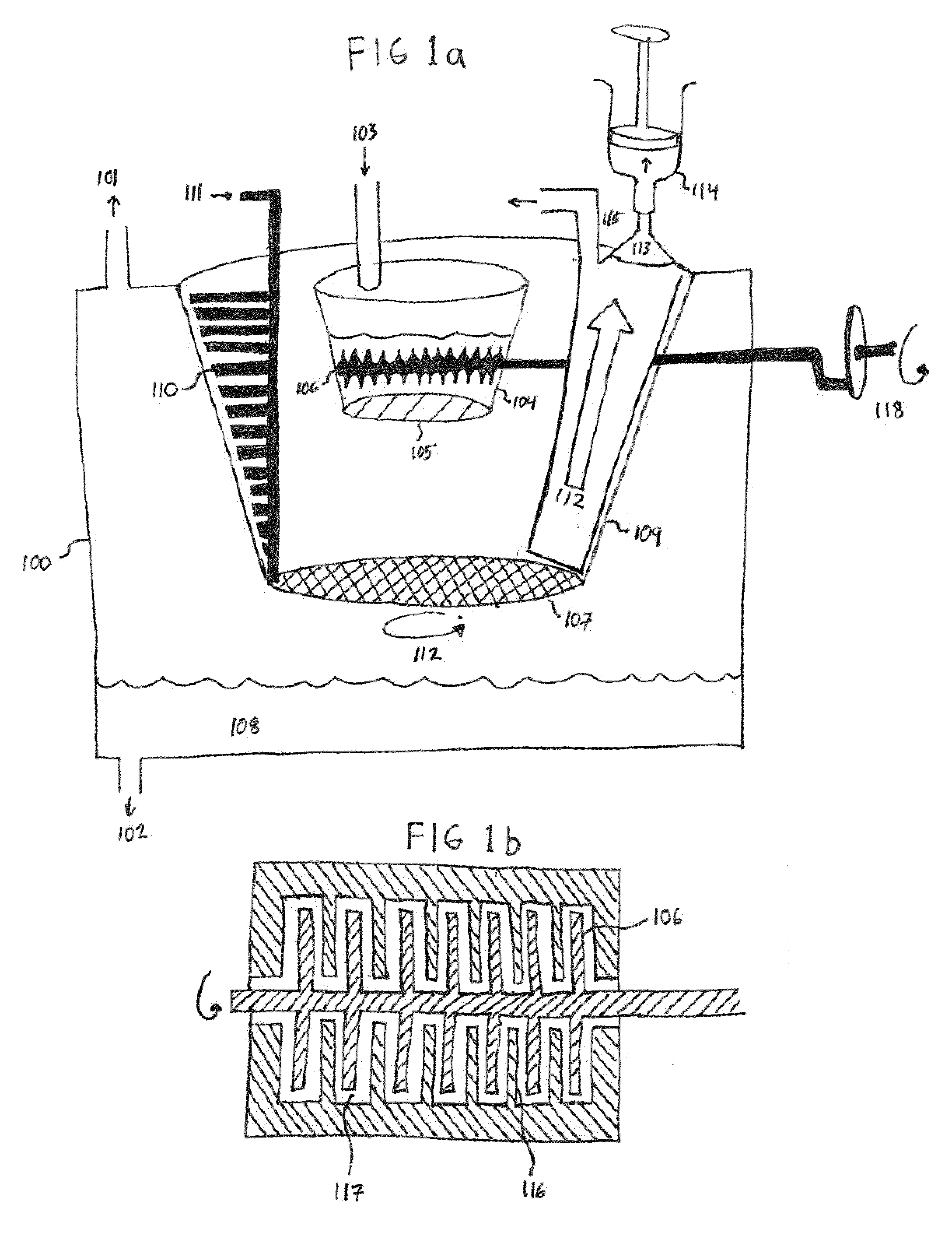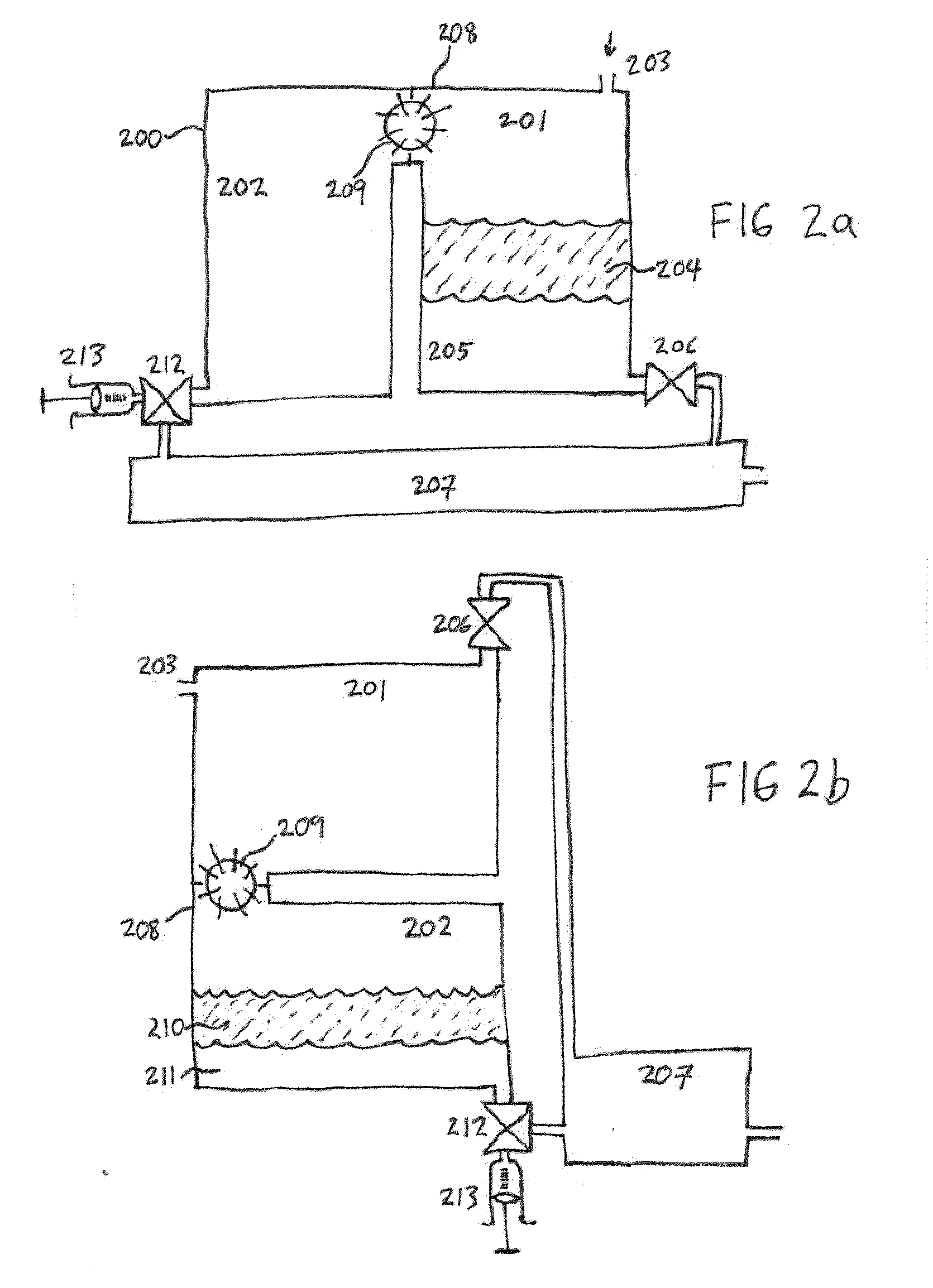Adipose tissue collection and pre-processing devices for use in liposuction procedure
a technology for adipose tissue and adipose tissue, which is applied in the field of adipose, can solve the problems of difficult use for some surgeons, system does not remove fibrous connective tissue from the sample, and surgeons can only collect roughly 10 to 20 cubic centimeters at a tim
- Summary
- Abstract
- Description
- Claims
- Application Information
AI Technical Summary
Benefits of technology
Problems solved by technology
Method used
Image
Examples
example 1
[0078]In another example, not intended to be limiting, and not intended to represent every aspect of the inventions described herein, lipoaspirate may be mixed with an equal volume of saline, PBS, or media, and may optionally be shaken or stirred (preferably shaken). About 80 mL of the mixture may then be placed into a commercial potato ricer and pressed, thus extruding the non-fibrous content of the sample through the perforations of the ricer while leaving behind the fibrous tissue. If, because of an incomplete seal on the ricer, some of the fat leaks onto the top of the compression disk, it may be recycled to the bottom of the disk and re-pressed. A more preferred compression piston may contain a seal for preventing such leakage.
example 2
[0079]In another example, not intended to be limiting, and not intended to represent every aspect of the inventions described herein, lipoaspirate may be mixed with an equal volume of saline, PBS, or media, and may optionally be shaken or stirred (preferably shaken). 200 mL or more of the mixture may then be passed through a commercial rotary herb mill. The mill may be rotated, and in the process non-fibrous adipose tissue may be passed through the mill, while the fibrous tissue does not pass, and becomes wound up in the blades of the herb mill. During this process, tape may be used to seal off any holes other than the openings between the stationary blades and rotary blades of the herb mill.
example 3
[0080]In another example, not intended to be limiting, and not intended to represent every aspect of the inventions described herein, gauze may be attached to the inside of a commercial salad spinner with lab tape. A suitable salad spinner may, for example, be the OXO Good Grips Little Salad & Herb Spinner provided by OXO International, Ltd. Suitable gauze may, for example, be Venture™ 4 in. by 4 in., 12 ply gauze supplied by TIDI® Products, catalog No. 908272. The gauze may be wetted with approximately 100 mL of a wash buffer and spin in the salad spinner to cause the gauze to stick to the inner bowl of the salad spinner. About 80 mL of lipoaspirant tissue from which fibrous tissue has been removed may be mixed with about 80 mL of wash buffer and placed in the inner bowl of the salad spinner. The mixture may be spun manually or via a motor a sufficient number of times to remove much, preferably most, of the liquid content of the tissue sample. Because of the centrifugal force, the ...
PUM
 Login to View More
Login to View More Abstract
Description
Claims
Application Information
 Login to View More
Login to View More - R&D
- Intellectual Property
- Life Sciences
- Materials
- Tech Scout
- Unparalleled Data Quality
- Higher Quality Content
- 60% Fewer Hallucinations
Browse by: Latest US Patents, China's latest patents, Technical Efficacy Thesaurus, Application Domain, Technology Topic, Popular Technical Reports.
© 2025 PatSnap. All rights reserved.Legal|Privacy policy|Modern Slavery Act Transparency Statement|Sitemap|About US| Contact US: help@patsnap.com



